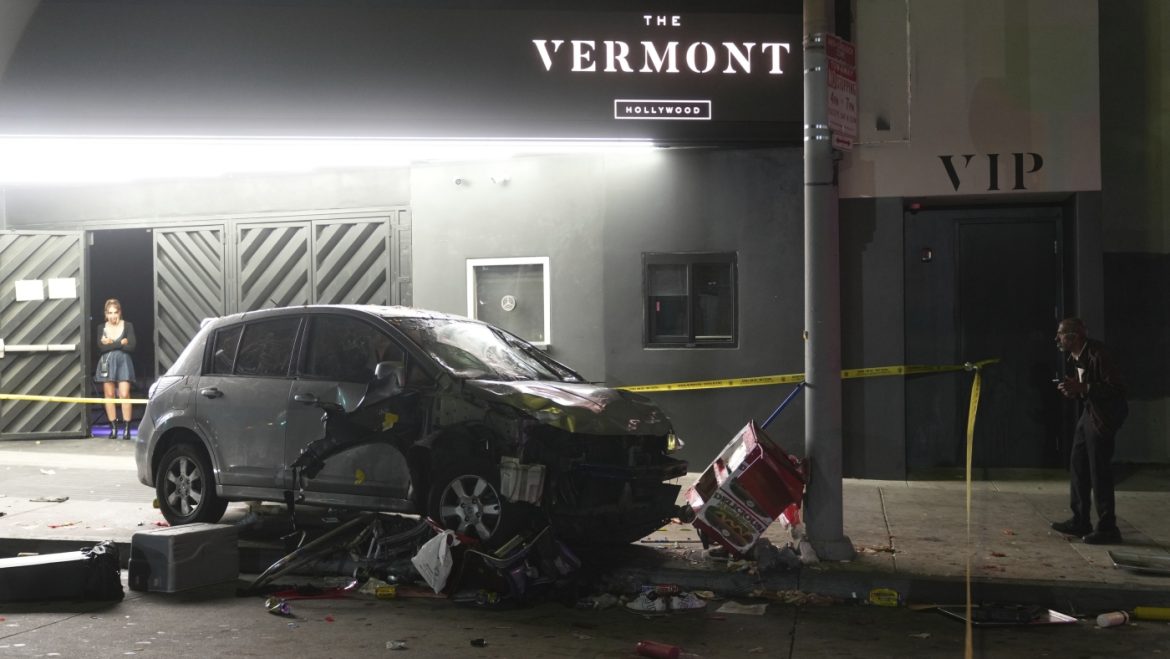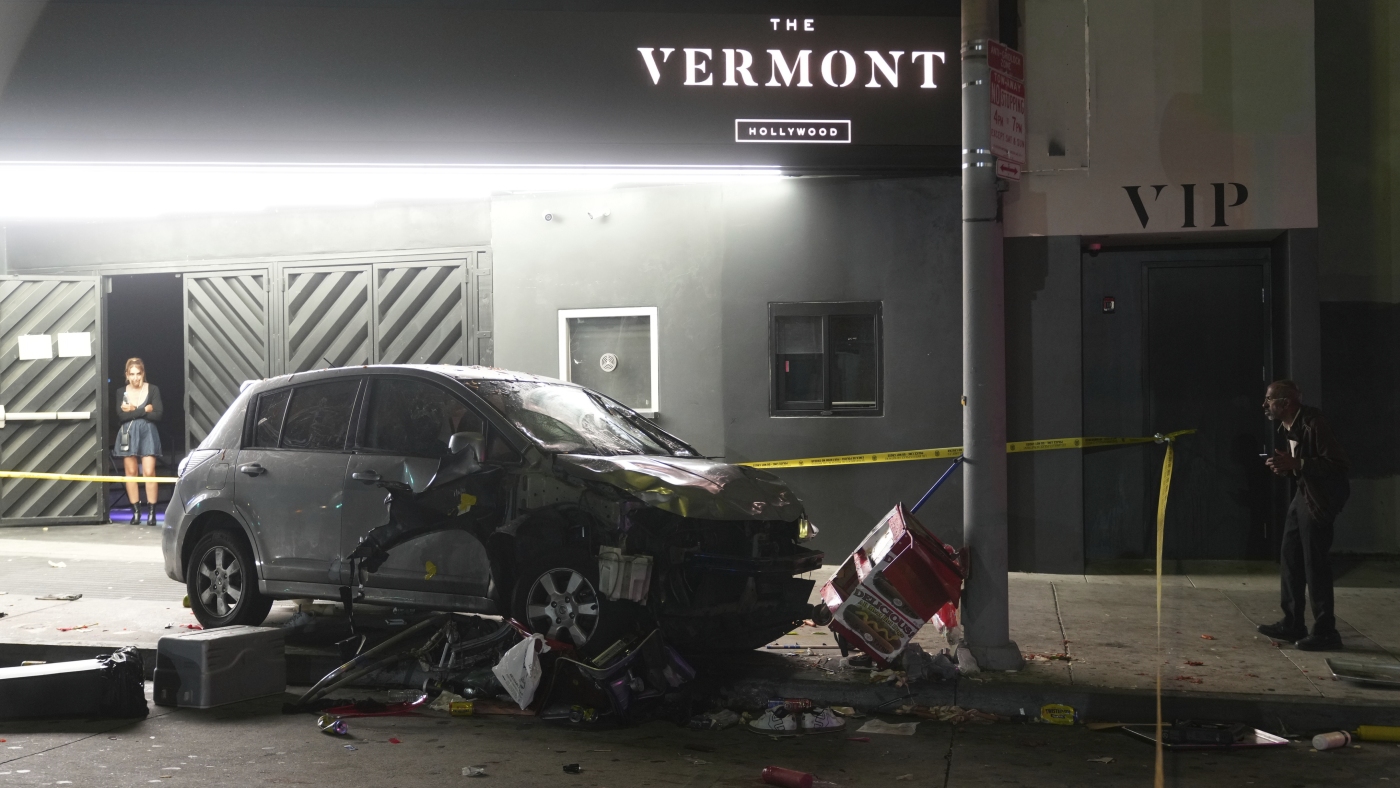Analysis of the Vehicle Incident on Santa Monica Boulevard: A Night of Chaos in Los Angeles
Introduction: A Night of Shock and Tragedy
The early hours of a Saturday morning in Los Angeles were shattered by a horrifying incident: a vehicle plowing into a crowd of people on Santa Monica Boulevard in East Hollywood. The scene was one of chaos, with emergency responders rushing to aid the injured and authorities scrambling to determine the cause. This report examines the immediate aftermath, potential causes, investigative challenges, and broader implications of this tragic event.
The Immediate Aftermath: Chaos and Emergency Response
The moments following the incident were marked by panic and confusion. The Los Angeles Fire Department (LAFD) reported that the vehicle struck a crowd of pedestrians, resulting in over 30 injuries, with at least three individuals in critical condition. The LAFD’s rapid response was crucial in stabilizing victims and transporting them to nearby hospitals. The severity of injuries varied, with some victims suffering life-threatening trauma while others sustained less severe but still serious injuries.
Captain Adam Van Gerpen, the public information officer for the Los Angeles City Fire Department, played a key role in coordinating emergency efforts and providing updates to the media. His leadership ensured that critical information was disseminated efficiently, helping to manage the crisis.
Location and Context: A Nightlife Hotspot
The incident occurred on Santa Monica Boulevard in East Hollywood, a well-known area for its vibrant nightlife. The vehicle reportedly crashed into a crowd gathered outside a nightclub, a detail that highlights the high concentration of pedestrians in the area. The timing—early Saturday morning—further emphasizes the likelihood of a large crowd, as this is a peak time for nightlife activity.
Understanding the dynamics of the location is essential in reconstructing the events. The presence of multiple pedestrians in a confined space likely contributed to the severity of the injuries. Additionally, the fact that the incident occurred in a nightlife district raises questions about crowd control measures and the safety of such high-traffic areas.
Unraveling the Cause: Accident or Intent?
One of the most pressing questions surrounding the incident is whether it was an accident or a deliberate act. Initial reports were conflicting, with some suggesting the driver may have lost consciousness before the crash. However, other reports indicated that the driver was shot after the incident, complicating the investigation.
Determining the cause will require a thorough examination of multiple factors, including the driver’s medical history, any signs of impairment, and witness testimonies. The presence of conflicting reports and potential misinformation further complicates the process. Until a definitive conclusion is reached, speculation remains premature.
Investigative Challenges: Piecing Together the Truth
The investigation into this incident presents several challenges. Surveillance footage from nearby businesses will be crucial in reconstructing the events leading up to the crash. However, obtaining and analyzing this footage may be time-consuming, and some cameras may not have captured the incident clearly.
Interviewing witnesses will also be a delicate task, as many may have been traumatized or under the influence of alcohol at the time. Investigators must approach these interviews with sensitivity to ensure accurate and reliable information.
Additionally, determining the driver’s state of mind and motivations will be complex. If the driver was shot after the incident, investigators must explore whether this was a retaliatory act or an unrelated event. A comprehensive and impartial investigation is essential to uncover the truth and provide closure to the victims and the community.
Community Impact: Fear and Uncertainty
The incident has sent shockwaves through Los Angeles, particularly in East Hollywood. The sight of emergency vehicles, the news of multiple injuries, and the uncertainty surrounding the cause have created a sense of fear and unease among residents.
The incident may also have a chilling effect on the local nightlife scene, with people becoming more hesitant to gather in crowded areas. Businesses in the area may experience a temporary decline in patronage as patrons reconsider their safety.
Addressing the community’s concerns and providing support to the victims and their families is essential in the aftermath of this tragedy. Community meetings, increased police presence, and mental health resources may help alleviate fears and foster a sense of security.
Broader Implications: Public Safety and Prevention
Beyond the immediate impact on the victims and the community, this incident raises broader questions about public safety measures and security protocols. Are there adequate safeguards in place to prevent similar incidents in the future? Should barriers or other protective measures be implemented in high-pedestrian areas?
The incident also underscores the importance of responsible driving and the potential consequences of impaired or reckless behavior. A thorough review of existing safety measures and a renewed focus on driver education may be necessary to prevent future tragedies.
The Role of Media: Responsible Reporting
The media plays a critical role in informing the public about the incident. However, it is essential for news outlets to report the facts accurately and avoid sensationalism. The use of graphic images or speculative reporting can exacerbate the community’s anxiety and undermine the investigative process.
Responsible journalism requires verifying information, presenting multiple perspectives, and avoiding the spread of misinformation. The media also has a responsibility to provide context and background information to help the public understand the broader implications of the incident.
Moving Forward: Healing and Prevention
This tragedy will have lasting consequences for the victims, their families, and the community. As the investigation unfolds, it is essential to focus on healing and prevention. Providing support to the injured and their families, addressing the community’s concerns, and implementing measures to prevent similar incidents in the future are crucial steps in the recovery process.
By learning from this tragedy, Los Angeles can work toward creating a safer and more secure environment for all its residents.
Conclusion: A Scar on the City
The events on Santa Monica Boulevard have left a deep scar on the city of Los Angeles. While the physical wounds may heal over time, the emotional and psychological impact of the incident will likely linger for years to come. It is important to remember the victims and honor their memory by working toward a future where such tragedies are prevented.
Rebuilding trust, fostering a sense of community, and promoting responsible behavior are essential steps in the long and arduous journey of healing. Only through collective effort and unwavering commitment can Los Angeles truly overcome this dark chapter and emerge stronger and more resilient than before.


